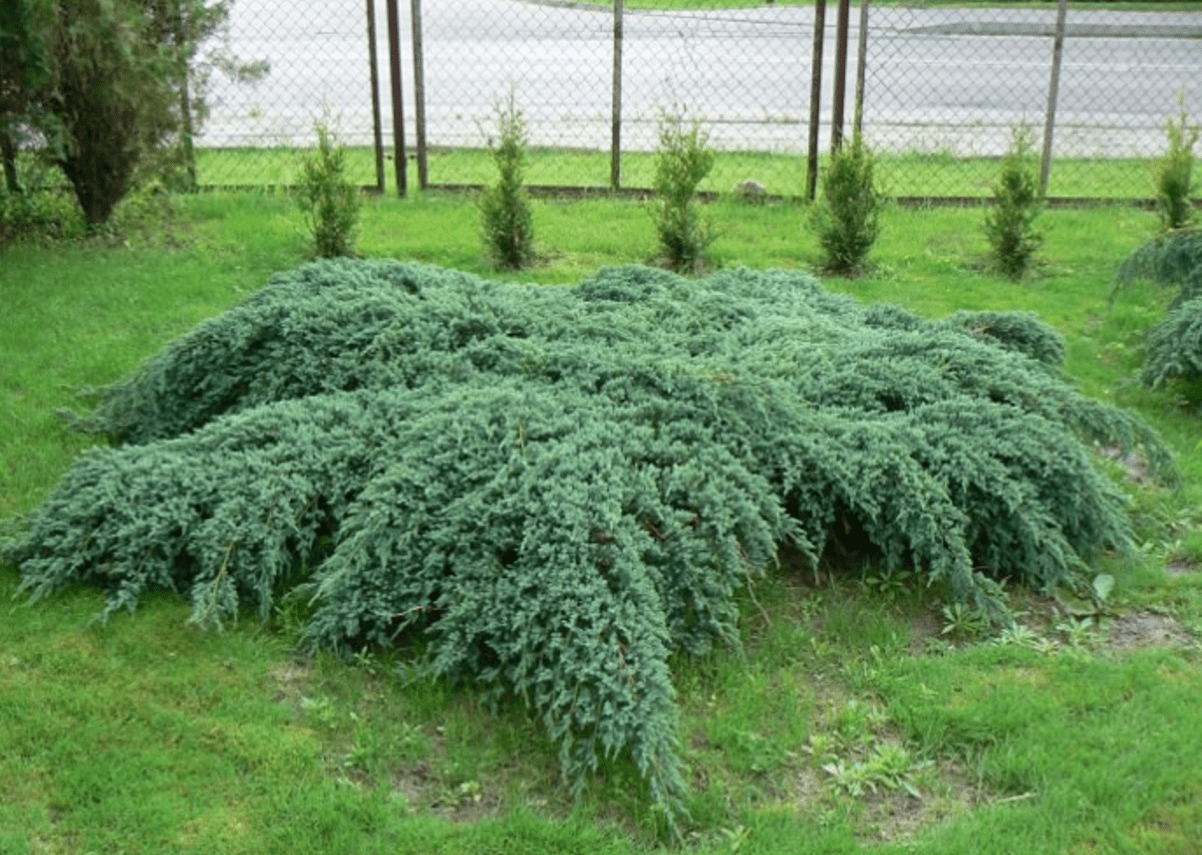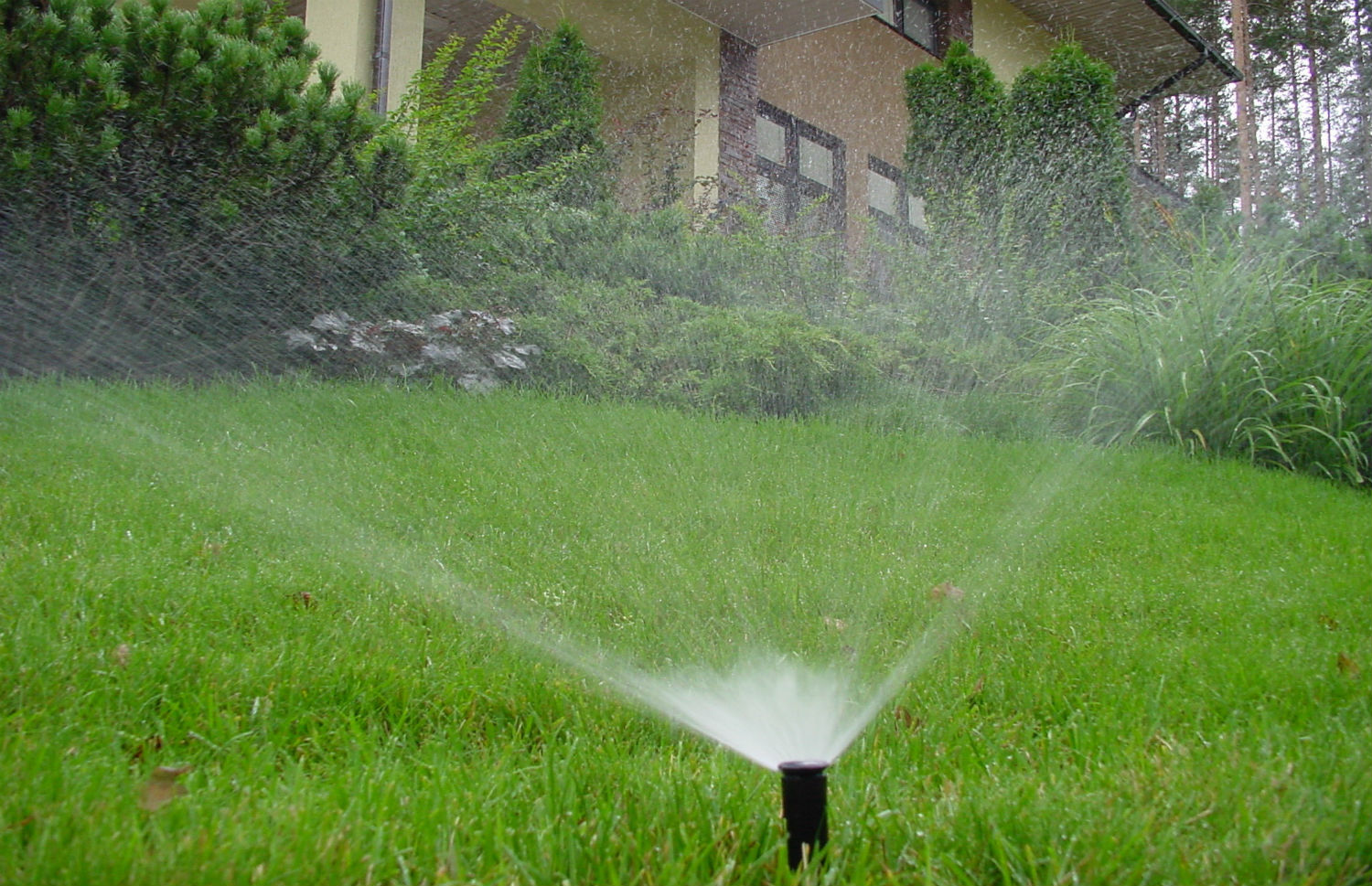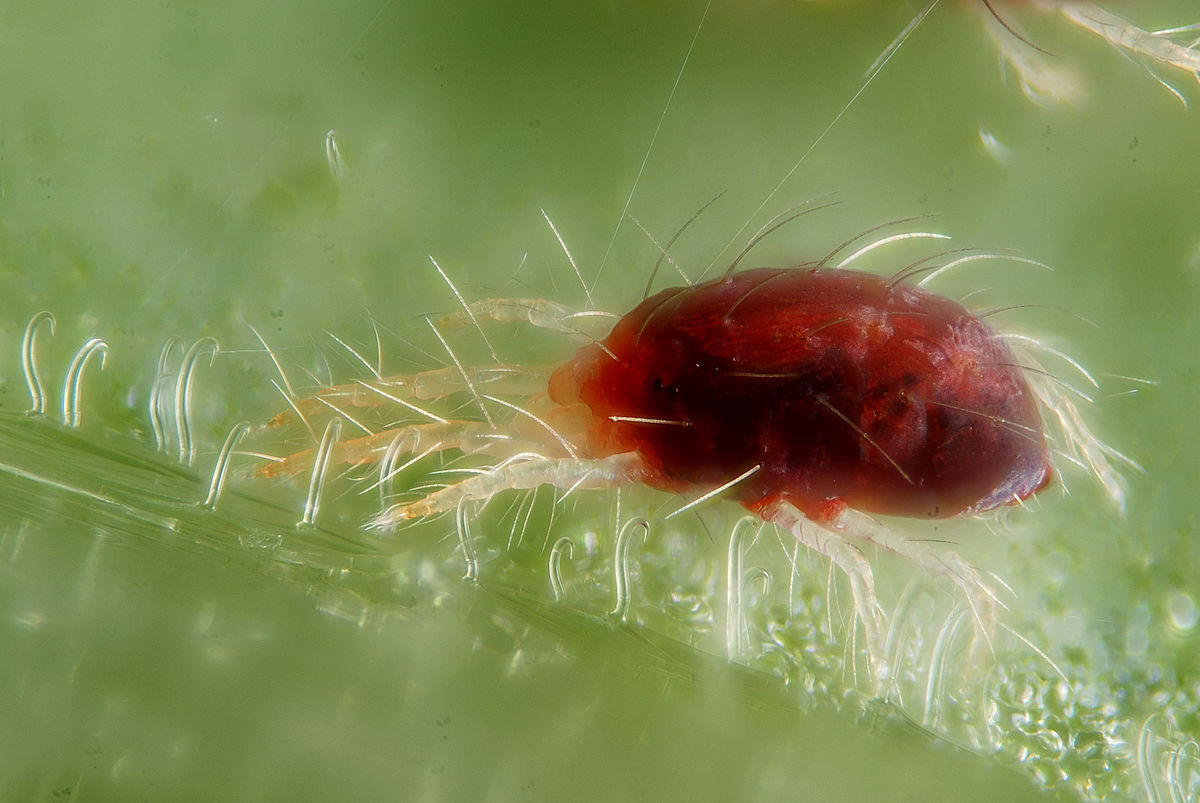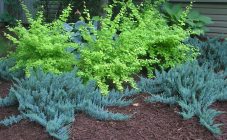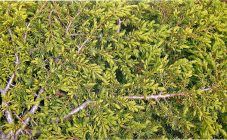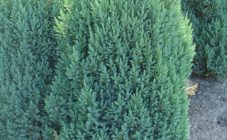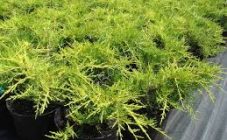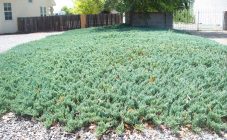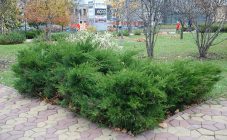Content:
Juniper is an evergreen coniferous plant that is popular with gardeners. Among the variety of varieties, it is worth paying attention to the Blue Carpet. The needles of this shrub are blue or bluish-silver in color, hence its name. The crown of the Blue Carpet juniper is very branched, flat-growing. Blue berries grow on the shrubs of this variety, but this happens only if all the features of care have been observed and optimal climatic conditions are provided.
Botanical description
The Blue Carpet Juniper (Latin) was developed by Dutch scientists in 1972. And they created it from the Meyeri variety. Blue Carpet is characterized by a crown of bluish-silver sharp needles about 10 millimeters long.
Since the shrub grows flat, its shape resembles a spread carpet up to 250 centimeters in diameter. At the same time, a juniper can grow up to 0.6 meters in height. Moreover, in just one year, the bush grows 80-100 mm. Blue Carpet bears fruit with dark blue berries with a whitish bloom. Frost resistance: high.
Most often, this coniferous variety is chosen for the decoration of parks and garden plots, due to its unpretentiousness and durability.
Features of planting and proper care
It is not difficult to cultivate this variety of juniper.
First of all, you need to choose the right place for planting it with the following characteristics:
- The site must be well lit.
- The soil should not be saline.
- The groundwater should be as deep as possible.
In order for the juniper to quickly take root, it must be planted in the spring or autumn. You need to dig a hole in accordance with the size of the purchased seedling. The soil needs to be prepared - mix one part of sand and turf with two parts of peat.
The planting hole should be two to three times the diameter of the root part together with the ground and a depth of about 0.6-0.7 meters. First, 20 cm of drainage must be laid in the pit. These can be pieces of bricks or expanded clay with sand. Then set up the seedling and cover it with prepared soil.
In order for the plant to develop and grow well, it is impossible to deepen its basal neck.
How to organize watering
Young scaly juniper bushes Blue Carpet need to be watered regularly, and adults only during dry periods, as they already acquire a high degree of drought tolerance.
Another important point in the care of the scaly Blue Carpet is the timely removal of weeds. To make this take less time, you need to distribute a layer of mulch around the trunk. You can use gravel, pine chips or bark for this. Every year in the spring, it is necessary to fertilize the juniper with a special top dressing designed specifically for conifers or nitroammophos.
Illumination level
Bright sunny spring rays can harm a coniferous plant, therefore, in the autumn period, the crown of the Blue Carpet juniper must be covered.
For this, you can use a special green mesh or white non-woven fabric. It does not need to be protected from frost, since the plant is frost-resistant with a high degree of resistance.
Pruning branches
Growing a plant involves pruning it regularly.
- In the spring, it is necessary to cut off all branches of a juniper that for some reason have dried up or grow in the wrong direction.
- Before covering the juniper bush for the winter, remove all leaves from other trees and shrubs. If this is not done, the crown may begin to rot, and part of the bush may even wither away.
Reproduction of juniper
All decorative juniper varieties are propagated by cuttings. To obtain planting material, it is necessary to cut the lower branch from the bush about 12 cm long, then clear the lower tip of needles and place it in a special solution for 24 hours, which accelerates the formation of the root system. After that, the cutting is placed in a container with peat and sand, tightly covered with a film.
Containers with rooted cuttings are placed in a shaded place and constantly sprayed with water, and also ventilated.
If everything is done correctly, then in 1.5 months the cutting will have its roots. And after three months, the seedlings are ready for planting in open soil for wintering. A juniper can be planted in a permanent place only after 2-3 years, when its shoots are fully formed.
Diseases and harmful insects
The most common disease of this juniper variety is rust. As soon as signs of this disease appear, the bush must be treated with a mixture of Arcerida. You need to spray the bush four times every 10 days.
Insects that can attack the Blue Carpet include:
- spider mite;
- aphid;
- miner mole;
- scabbard.
You can destroy them using special chemical solutions. You can fight an aphid attack with Fitoverm. They are processed twice a month. Karate does an excellent job with spider mites, and Decis is suitable for destroying miner moths. You can eliminate the shield with the help of Karbofos.
Landscape design
In landscape design, a single group of junipers is very common against the background of the lawn. However, it is very difficult to care for the latter in this case. It is best to make a composition from different coniferous varieties. The creeping Blue Carpet juniper will look great against the background of tall bushes of a different variety.
Many designers can combine this juniper variety with other conifers, as well as perennial crops, and even deciduous shrubs and annual flowers. When creating such complex compositions, it is necessary to keep track of the distance between different cultures. It should allow plants to fully develop and not drown out each other.
Since the Blue Carpet is a flat growing plant, it looks great on a variety of slopes and alpine slides. Even the shores of a garden reservoir are covered with such a "carpet". It is also suitable for cultivation in flat rockeries.
The best companion neighbors for the Blue Carpet are:
- spring bulbous flowers;
- geranium;
- rose flower;
- ground cover herbaceous crops.
With the help of the Blue Carpet juniper, it is possible to green the city, as it is characterized by high resistance to ambient air pollution, and also various decorative artistic figures are obtained from it. It can also be used as a container culture.
